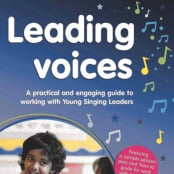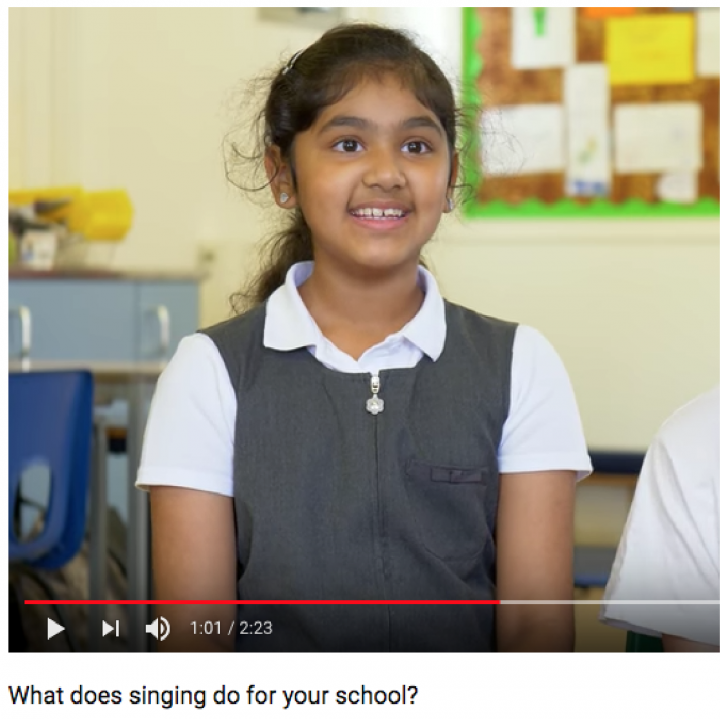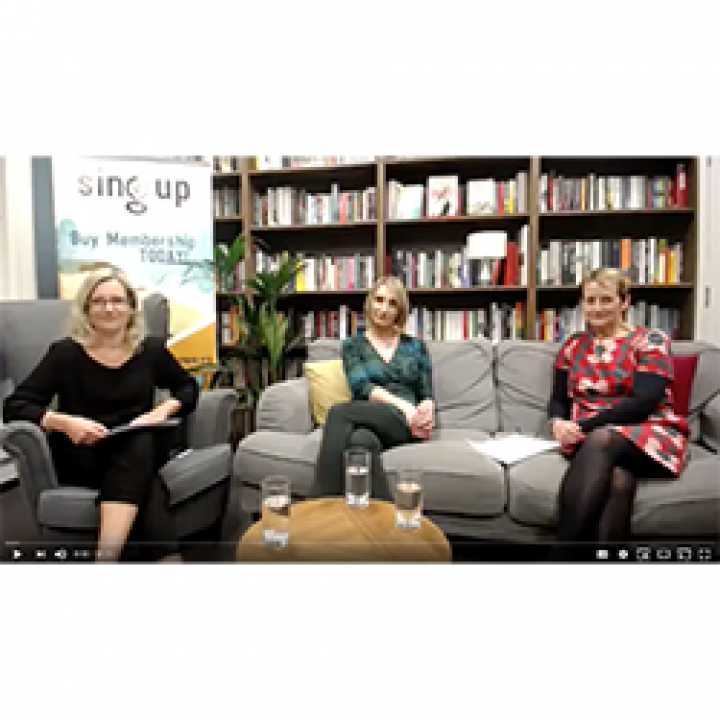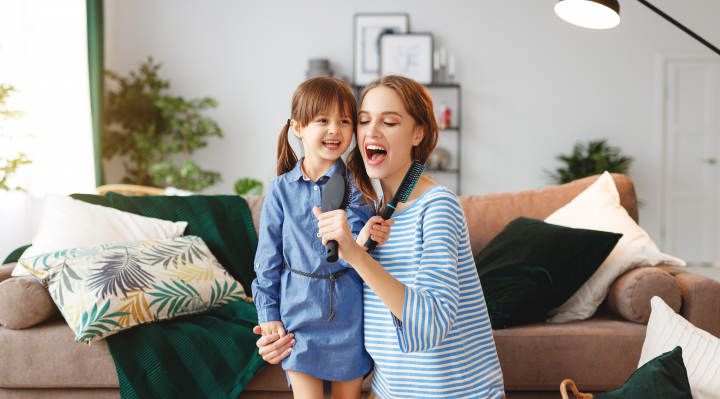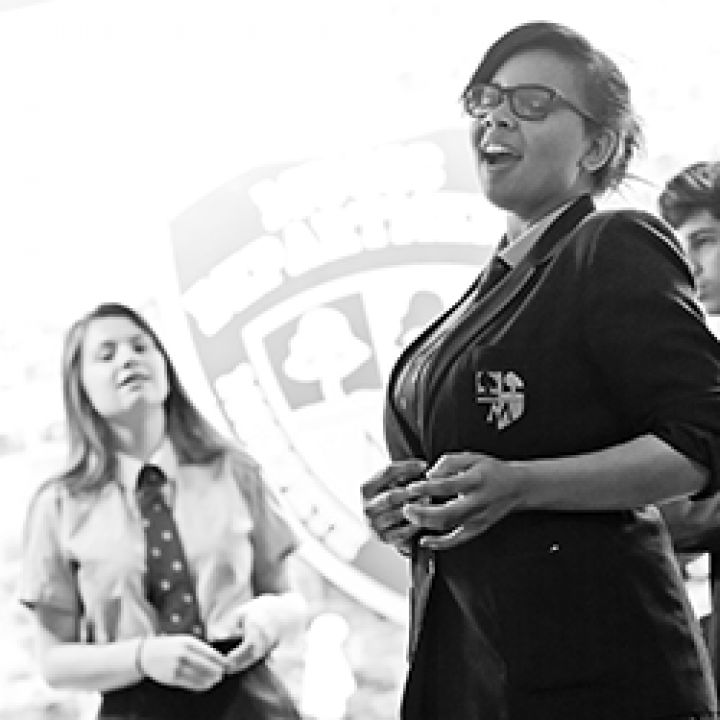
Katherine Zeserson helps guide you through the language of music
What’s the idea?
Learning musical concepts is always easier when we explore them through making music, rather than just considering them theoretically. The ideas make more sense to us – and the learning experience is a lot more enjoyable – when we are learning music musically1. We get to experience the effects of our choices on the music; and to feel, as well as to understand, the ideas we are explaining.
Using our voices as our enquiry tools, and reframing the music classroom as a group singing research lab, unlocks pathways to rich, dynamic musical learning and creativity. Knowledge and understanding about music language, forms and structures, about styles and genres, about compositional and improvisational techniques, can all be developed through singing2. An added benefit of this approach is that you and your students will spend more time singing, and given all that is now known about the benefits of singing in terms of well-being, health and community cohesion that must be a good thing!3 The best news of all is that you don’t have to be a vocal specialist to work in this way – just a passionate music educator who is interested in active learning and high levels of student participation.
As Martin Ashley says in his book Singing in the Lower Secondary School, the use of the singing voice is ‘… all but indispensable to the development of aural acuity, the internal ear and musical memory4.’ He goes on to say: ‘Singing is, in partnership with listening, the way musical intelligence is developed.’
What are the benefits of learning music through singing?
When we sing, we are literally embodying music, which helps to embed theoretical propositions as physical experiences, making them easier to remember and reproduce. Questions of texture, timbre, rhythmic vocabulary and pitch can be investigated and then understood through the process of singing, with students learning to internalise musical concepts through the experience of producing and controlling their own sound. There is a long tradition of movement underpinning music learning, for example through the Dalcroze and Kodály methods, which in their different ways use voice and body as context for developing musical knowledge and understanding.
Working with songs/vocal arrangements – and particularly musical materials that students have themselves had a hand in creating – sets the classroom up as a rehearsal room. Active group music making brings musical problems to life, and creates positive conditions for team-work and peer-learning, as has been well-articulated for example through the Musical Futures Find Your Voice programme. The ensemble context makes it easier to include everyone in musical success. No matter what each student’s level of competency, you can ensure there is a meaningful musical role for them in the vocal realisation of the musical ideas being explored.
No one needs access to an instrument – or instrumental competency – to be fully involved, and it is easy for students to continue working on ideas outside the classroom. Voices can be easily recorded using domestic handheld technology, which opens up possibilities for students to create complex layered arrangements individually and/or in groups. The task of transcribing these for the group to sing can then open a well-motivated pathway to work on notation.
So how will it work?
First of all, you'll establish a culture of musical voice use in the classroom that is inclusive, responsive to student interests and sensitive to changing voices, You can build vocal music - making into all your music lessons in small steps, starting with bite-sized repertoire like chants and rounds. (try Bungalow, Senwa dedende, Shabuya or Tue tue) using riff-based songs that don't require any notation reading skills (try Reggae riffs and Wish) and working with students' own experience and musical interests. 'Singing' here will always include vocal percussion, vocalese (making vocal sounds that use nonsense syllables) and imitating instruments in the voice (try Don't worry, be happy, Halima pakasholoor and Wayfaring stranger.) The core objective is to establish a comfortable culture of musical voice use that all your students are engaged in.
Next, decide what musical concepts you want to investigate through voice, and over what period of time. You can do this by integrating several elements. For example, you might take reggae as a genre to underpin half a term’s work, and then within that you might decide to look at harmony and the use of stresses and rests in rhythmic patterns. You and your students can choose some reggae songs to work with as your core research material. Your musical output goal could be a recording or live performance of at least two songs, with one arrangement made by students, and one ‘classic’ arrangement.
And now the fun starts. You might begin by listening together to recordings and discussing key features of the music in relation to your focus elements, and then supporting students to translate those onto their voices. Then you could take song melodies that don’t come from the reggae tradition and support students to apply the principles they’ve unpicked from from their first singing research process to making new vocal reggae arrangements. Students could compose entirely new songs for the group in a reggae style, using the insights from these processes. The challenge of interpreting instrumental lines for expression through voices will engage students in understanding the ‘anatomy’ of the music – its underlying structures.
Coming at it a different way, you could use contrasting a cappella vocal materials from around the world to investigate composition and arrangement, use of textures and timbres, different harmonic conventions, expressive strategies and the social context of musical invention. First listening, then having a go at singing – which might include researching a new vocal technique – then analysing the structural elements, and then composing.
Top tips
- Any and all songs/vocal materials can make relevant resources for helping students to learn and take control of musical concepts. You could compile a group of songs through discussion with your students that then form the ‘research set’ that you use together all term, or even all year, to investigate a range of musical propositions. To help you find suitable repertoire, you can use the ‘Display songs by’ search function in the Song Bank to filter songs by musical topic.
- Your focus needn't be on perfect performances but rather on using voices to understand and create interesting music - however, performance focus does add motivation and excitement to learning.
- Students will start to sing better through this approach to their musical learning, and you can support and encourage this through adding references and resources drawing on world vocal traditions as well as contemporary and popular vocal music.
- Many of your student's voices may be changing, so keep an eye on range and pitch. You can use arrangements that are musically exciting whilst not over-stretching the changing voices so that students have good models to work with.
Conclusion
Singing your way into music is the oldest musical learning strategy on the planet, and you and your students can be researchers together; co-investigators in a diverse, vivid aural universe. Explore, create and learn together whilst at the same time enjoying all the physical and psychological benefits of singing. What could be better than that?
Footer information
1-Savage, J. (ed) The Guided Reader to Teaching and Learning Music, (Routledge 2013); Small, C. Musicking (Routledge, 1998)
2-Ashley, M. Singing in the Lower Secondary School (OUP, 2015);
3-Welch, G The Benefits of Singing for Adolescents (Institute of Education, 2011);
4-Ashley, M. ibid

